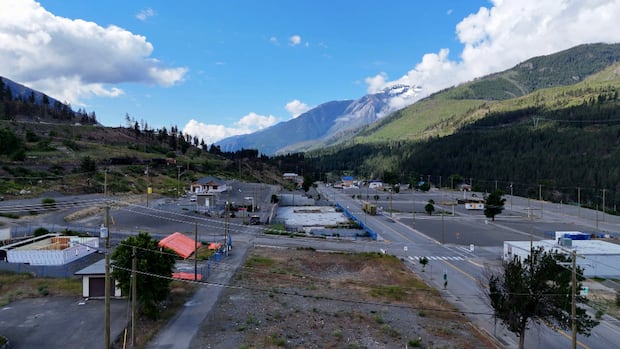
More than three years after a wildfire devastated Lytton, B.C., Mayor Denise O’Connor is calling for the province to cut red tape that’s slowing down rebuilding.
Despite funding from all levels of government, O’Connor says only a handful of residents have returned to the Interior B.C. village.
“The rebuilding efforts in Lytton remain unacceptably slow,” O’Connor said at a news conference on Tuesday. “The sluggish pace has made it impossible for many residents to return to their homes. Many are feeling hopeless and defeated.”
According to O’Connor, there is a legal requirement for each site to undergo an archeological study before it can be rebuilt — studies she says that are costly and slowing down the village’s recovery. In three years, 15 building permits have made it through the archeological process, and only three homes are ready for families to return to.
Now, O’Connor is asking the province to speed up the archeological process and fund the cost of the studies.
“These studies are clearly very important, and we fully respect the need to protect the sites that are of historical value for Indigenous peoples,” she said. “However, the delay and costs associated with these studies are placing an overwhelming burden on the residents who are already grappling with so much loss.”
The B.C. Ministry of Emergency Management and Climate Readiness did not respond to requests for comment in time for publication.
In May, the province’s auditor general announced the office is investigating the B.C. government’s response to the wildfire.
On June 30, 2021, the day after Lytton hit a Canadian record-high temperature of 49.6 C, a wildfire scorched nearly the whole village and killed two people.
Similar incidents are expected to happen more often. Natural Resources Canada says it expects wildfires and the hot and dry conditions that feed fires to increase in magnitude as a result of human-caused changes to the earth’s climate.
It’s estimated that about 90 per cent of the homes in the approximately 250-person village were levelled. According to the Insurance Bureau of Canada, the wildfire caused $102 million in insured damage.
Since then, the provincial and federal governments have sent the community more than $239 million in funding to help the community rebuild.
The press secretary for Indigenous Services Minister Patty Hajdu said in June, more than $120 million of that money went to the Lytton First Nation to support recovery and fast-track housing.
But that work has been slow. About 50 residents live in temporary trailers on adjacent land and nearby reserves. Hundreds more remain displaced.
The village is one of the longest continuously inhabited communities in North America, according to the village website. It says the Nlaka’pamux have lived in the area since the end of the last glacial period, making Lytton a significant cultural and historical site.
Some early buildings were constructed on top of burial grounds, and artifacts began to show up after the fire.
The province’s Heritage Conservation Act requires each site to undergo a heritage study before construction can begin. According to the act, the cost of that study falls on the applicant for a building permit — which O’Connor says are homeowners.
Three years after a wildfire destroyed most of Lytton, B.C., only a handful of homes and businesses have been rebuilt, and many residents are still displaced. The rebuilding has faced delays because of tougher building codes and the discovery of Indigenous artifacts on some properties.
These studies are costly and not covered by insurance, O’Connor said. She said the cost to conduct a study at ten of the homes ranged from $26,000 to $46,00. She added the quote for a study of one home was $86,000.
In addition to the costs, O’Connor says the team conducting the studies doesn’t have enough staff. There are only two archaeologists available to study the damaged sites.
O’Connor says she contacted the province asking for help but received no response.
